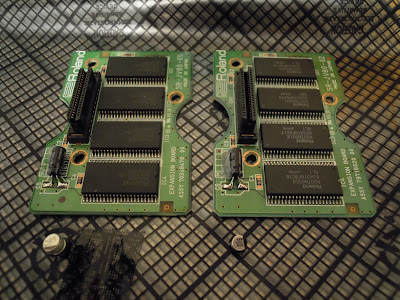 |
| The JV-2080, a ROMpler from 1997. |
I'm not very good on acoustic guitar, for example, and if I want a nice mellow arpeggiated guitar part for a track, it's obtainable with the JV-2080. It's never going to sound as good as a real acoustic guitar, of course, but as an embellishment for an otherwise electronic track it works very well.
Another example. A recent project required a vibraphone. Now, a vibraphone is a gigantic instrument that I'd never be able to get into the studio, even if I could find one locally. The JV-2080 has an authentic-sounding vibraphone, and all it needed was some vibrato from one of the on-board LFOs to make it sound like the motor was engaged. Small edits of a sound, such as the aforementioned vibrato, or longer/shorter decay are easily accomplished, and on-board effects can be turned on or off via the front panel.
There are an insane amount of sounds on-board (640 presets, 128 user) that cover the basics and even a few instruments you might not think of. There's even a banjo, though it fails to come close to a real one.
I recently wrote an orchestral piece (albeit fake orchestra), and found myself wishing I had a wider range of orchestral sounds in my arsenal. With that in mind, I hunted around online for the Orchestral expansion card: one of many made for this and other Roland units. There are eight slots under the removable panel on top of the unit for these cards. Mine actually has stickers for the Orchestral and Special FX expansions on top, but they were taken out at some point and likely sold individually or kept by a previous owner.
In my online researches, I discovered that Roland issued a 'cease usage' warning for all SR-JV80 expansion cards in 2017, because the electrolyte from the 20 year-old capacitor mounted to each board has a tendency to leak, leading to smoke, fire, and in worst-case scenarios, explosions! What to do? Thankfully replacing the capacitor with a new one is not difficult if you're patient and competent with a soldering iron. Refurbishing two expansion boards took me about 45 minutes. Thanks must go to Don Solaris for his instruction video on how to do this. My JV-2080 is now fitted with the freshly refurbished Orchestral and World expansion boards.
 | |
| Expansion boards after refurbishment. Note the old capacitors in the foreground. |
 |
| Orchestral and World boards snug in their new home. |
This comment has been removed by a blog administrator.
ReplyDelete